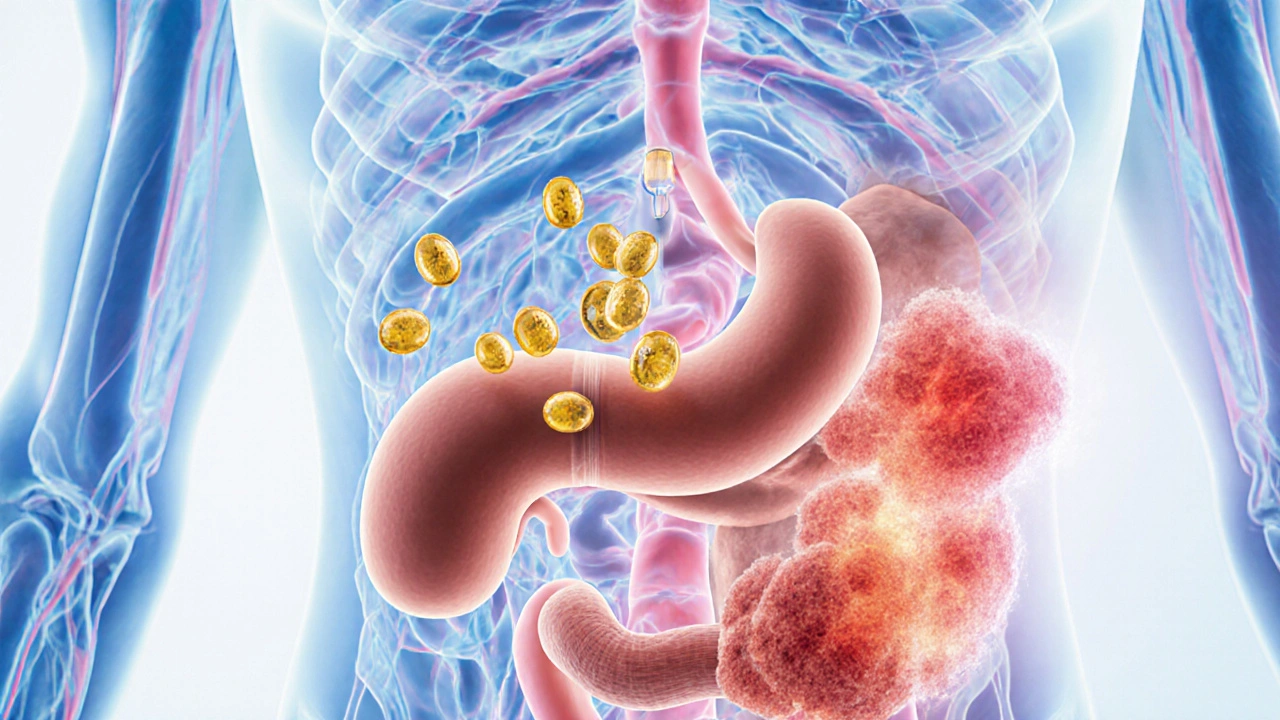
Type 2 Diabetes Diagnostic Calculator
Test Your Blood Glucose Results
Enter your diagnostic test values below to see if you fall into normal, prediabetes, or type 2 diabetes range.
Quick Takeaways
- Type 2 diabetes develops when cells resist insulin or the pancreas can’t produce enough.
- Key risk factors are excess weight, sedentary lifestyle, family history, and age over 45.
- Watch for frequent urination, intense thirst, fatigue, blurry vision, and slow wound healing.
- Diagnosis relies on fasting plasma glucose, 2‑hour oral glucose tolerance test, or HbA1c levels.
- Early lifestyle changes can delay or even reverse the condition in many people.
When you hear type 2 diabetes is a chronic condition where the body can't use insulin properly, leading to high blood sugar levels, it can feel overwhelming. This guide breaks down why it happens, what to look for, and how doctors confirm the diagnosis.
What Causes Type 2 Diabetes?
At its core, type 2 diabetes is driven by insulin resistance - the body's cells stop responding effectively to insulin, the hormone that moves sugar from the bloodstream into cells. Over time, the pancreas tries to compensate by pumping out more insulin, but eventually it can't keep up.
Several factors tip the balance:
- Obesity - especially excess fat around the abdomen - releases inflammatory chemicals that blunt insulin signaling.
- Genetic predisposition: having a first‑degree relative with diabetes can double your risk.
- Physical inactivity: muscles that aren’t used become less efficient at taking up glucose.
- Age: after 45, beta‑cell function naturally declines, making insulin shortage more likely.
- Ethnic background: people of South Asian, African, Hispanic, or Native American descent show higher rates.
Environmental influences also matter. High‑calorie diets rich in refined carbs and sugary drinks keep blood sugar spikes frequent, forcing the pancreas to work overtime. Over the years, this wear‑and‑tear contributes to beta‑cell fatigue.
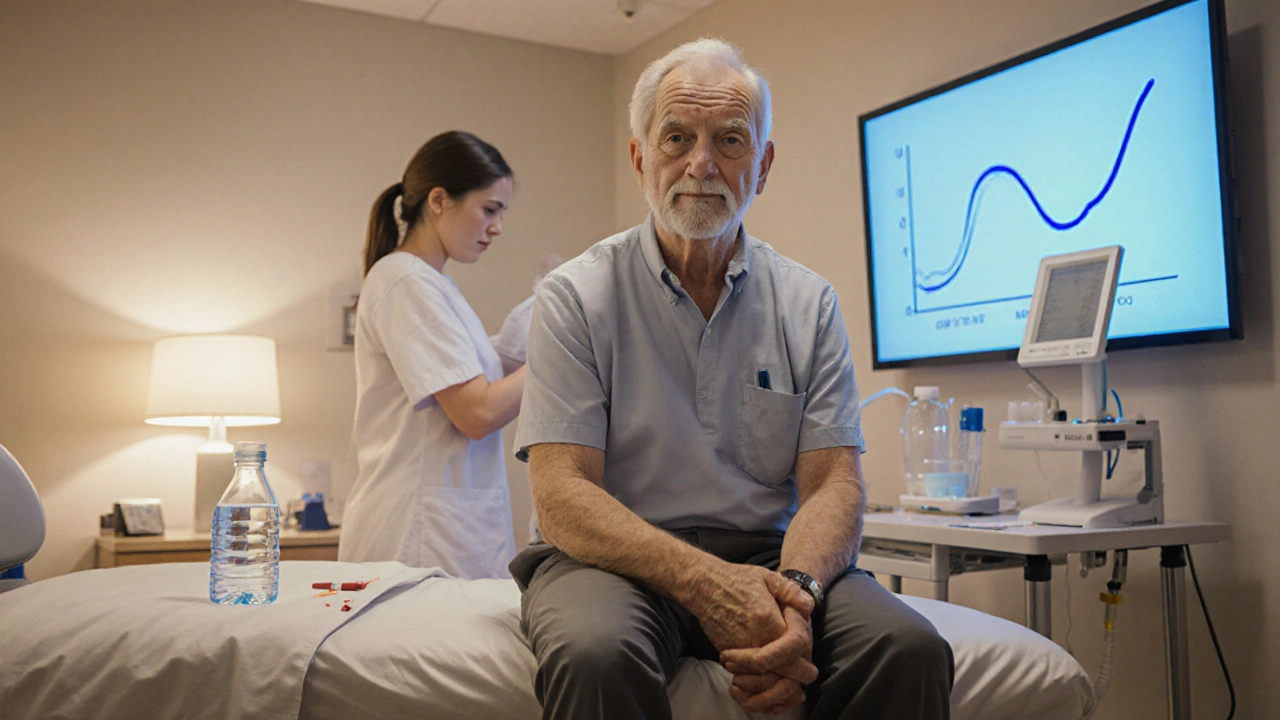
Recognizing the Symptoms
Early type 2 diabetes often hides behind subtle signs. When blood sugar climbs, the body tries to flush the excess through urine, leading to classic symptoms:
- Polyuria - increased need to urinate, especially at night.
- Polydipsia - constant thirst, even after drinking water.
- Unexplained weight loss - the body breaks down fat and muscle for energy.
- Fatigue - cells can’t access glucose, so you feel sluggish.
- Blurred vision - excess sugar pulls fluid from eye lenses.
- Slow healing of cuts or infections - high glucose impairs immune response.
Because these cues develop gradually, many people attribute them to stress or aging. If you notice two or more of these signs persisting for weeks, it’s time to get tested.
How Doctors Diagnose Type 2 Diabetes
Diagnosis hinges on measuring how the body handles glucose. The three most common tests are:
- Fasting plasma glucose (FPG) - a blood draw after at least 8 hours without food. Values ≥ 126mg/dL indicate diabetes.
- Oral glucose tolerance test (OGTT) - drink a sugary solution, then measure blood sugar two hours later. Levels ≥ 200mg/dL confirm diabetes.
- Hemoglobin A1c (HbA1c) - reflects average glucose over the past 2‑3 months. An A1c of 6.5% or higher meets diagnostic criteria.
Doctors may also run a lipid panel to check cholesterol, and a kidney function test because diabetes can affect renal health.
Below is a quick reference for the thresholds that separate normal, pre‑diabetes, and diabetes.
| Category | Fasting Glucose (mg/dL) | 2‑hr OGTT (mg/dL) | HbA1c (%) |
|---|---|---|---|
| Normal | < 100 | < 140 | < 5.7 |
| Prediabetes | 100‑125 | 140‑199 | 5.7‑6.4 |
| Type 2 Diabetes | >= 126 | >= 200 | >= 6.5 |
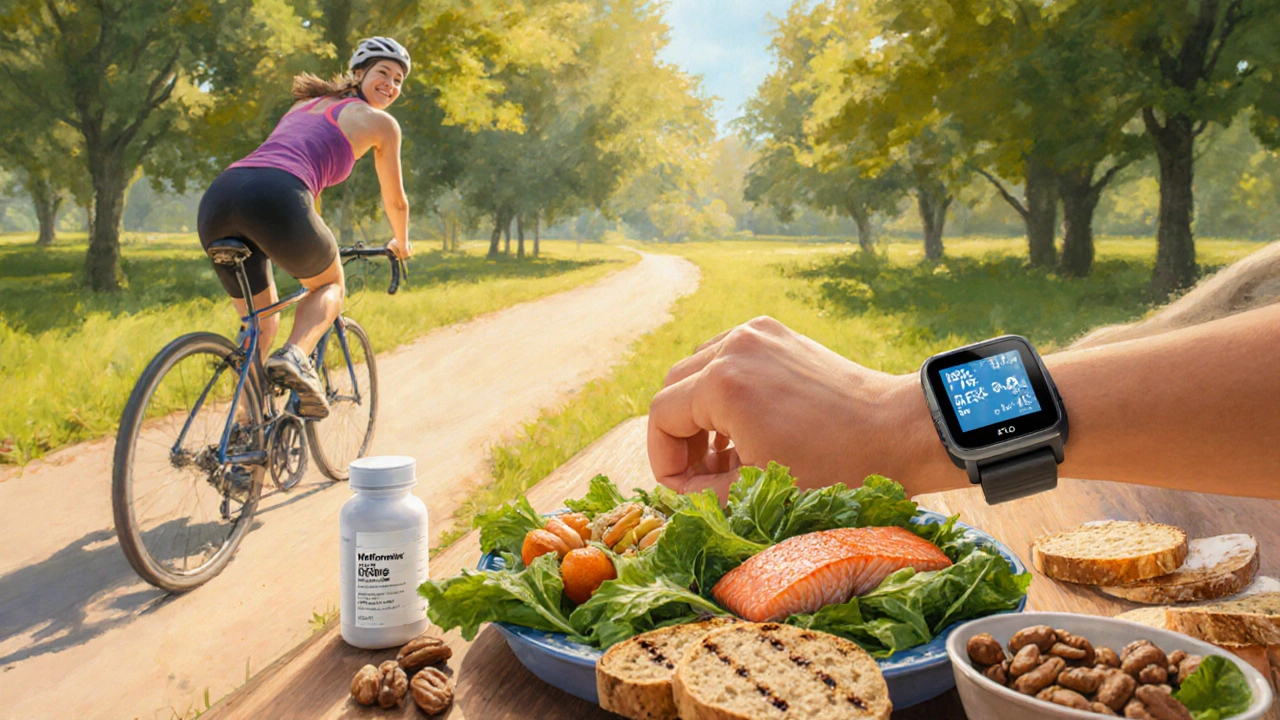
Putting the Pieces Together: A Simple Checklist
Use this quick self‑assessment before you book an appointment. If three or more items apply, schedule a screening.
- Age≥45 yearsor a strong family history of diabetes.
- Body mass index (BMI)≥25kg/m² (≥23 for Asian backgrounds).
- Physical activity less than 150 minutes per week.
- Experiencing any of the symptoms listed above.
- History of high blood pressure, abnormal cholesterol, or polycystic ovary syndrome.
Managing and Preventing Type 2 Diabetes
Once diagnosed, the goal shifts to keeping blood sugar in the target range (usually 80‑130mg/dL fasting). Strategies fall into three buckets:
- Nutrition - prioritize fiber‑rich vegetables, whole grains, lean proteins, and healthy fats. Cutting added sugars and refined carbs makes a big difference.
- Physical activity - aim for at least 150 minutes of moderate‑intensity exercise weekly. Walking, cycling, and resistance training improve insulin sensitivity.
- Medications - many start with metformin, which lowers hepatic glucose production. Your doctor will tailor therapy based on kidney function, weight, and other health conditions.
Regular monitoring is essential. Checking fasting glucose or using a continuous glucose monitor (CGM) helps you spot patterns and adjust habits in real time.
Understanding type 2 diabetes is the first step to taking control. With early detection, lifestyle tweaks, and appropriate medical care, most people can live full, active lives.
Frequently Asked Questions
Can type 2 diabetes be reversed?
Reversal is possible for many people if they lose excess weight, adopt a low‑carb, high‑fiber diet, and stay active. Sustained changes can bring blood sugar back into the non‑diabetic range, though lifelong vigilance is still needed.
How often should I get screened for diabetes?
Adults over 45 should be screened every three years. If you have risk factors-like obesity, family history, or a history of gestational diabetes-screen annually.
What’s the difference between type 1 and type 2 diabetes?
Type 1 is an autoimmune disease where the pancreas produces little to no insulin; it usually appears in childhood. Type 2 involves insulin resistance and relative insulin deficiency, developing later in life and heavily influenced by lifestyle.
Are there any natural supplements that help control blood sugar?
Some studies suggest cinnamon, berberine, and alpha‑lipoic acid may modestly lower glucose, but they shouldn’t replace prescribed medication. Always discuss supplements with your healthcare provider.
What complications can arise if diabetes isn’t managed?
Long‑term high blood sugar damages blood vessels, leading to heart disease, stroke, kidney failure, nerve damage (neuropathy), vision loss (retinopathy), and poor wound healing, especially in the feet.

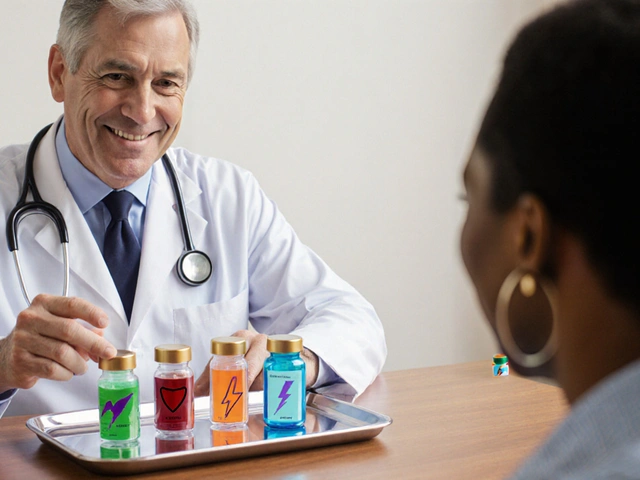
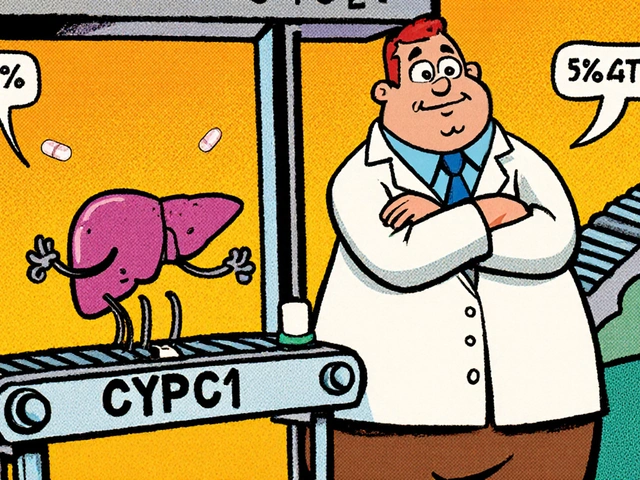
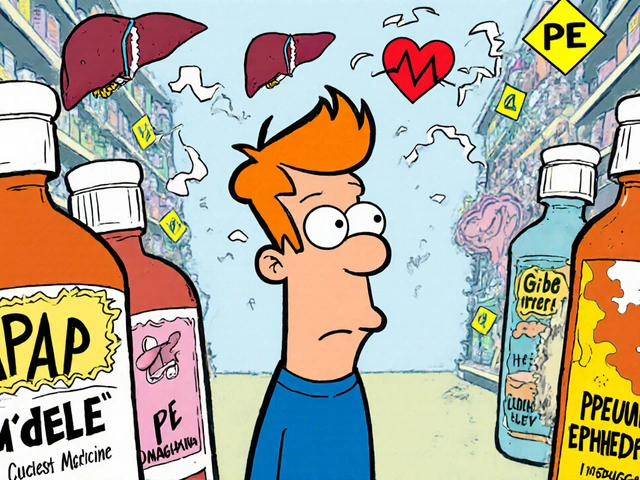
ahmad matt
October 13, 2025Your article reads like a textbook, not a coffee chat.
kristine ayroso
October 19, 2025Wow, this guide is jam-packed with info! I love how you broke down the test numbers so clearly. I’ve always been scared of getting my HbA1c checked, but now I feel more confident. Definitely sharing this with my crew.
Ben Small
October 25, 2025Totally feel you, Kristine! The blood‑sugar numbers can be intimidating, but you nailed the explanations. Remember, consistency beats intensity when it comes to exercise. Keep those carbs in check and stay active, and you’ll see results faster than you think. Let’s keep each other motivated!
Samantha Leong
October 31, 2025Thanks for the thorough rundown! The symptom list really hits home-especially the constant thirst thing. I’ve been ignoring those signs for months. Hopefully this pushes me to get screened soon.
anshu vijaywergiya
November 6, 2025What a spectacular piece! The way you wove genetics, lifestyle, and ethnicity together felt like a mini‑lecture that didn't put me to sleep. I especially appreciated the vivid image of abdominal fat releasing inflammatory chemicals-makes the science feel tangible. The quick takeaways are gold; I bookmarked them for my gym buddy. Also, the diagnostic thresholds table is a lifesaver for anyone fiddling with numbers. Your section on reversal gave me hope, because I think many think it’s a lost cause. The FAQs at the end anticipate the exact doubts I have, like supplement safety. Honestly, this guide could be the blueprint for a community health workshop. Kudos to the author for making a dense topic accessible and actionable.
ADam Hargrave
November 11, 2025Ah, Anshu, you’ve got the theatrics covered, but let’s not forget the elephant in the room-people still think diabetes is a death sentence. Sure, the diet tips are nice, but where’s the real talk about medication side effects? Also, the “reversal is possible” line feels overly optimistic without a disclaimer. And that table? A bit bland for a drama queen. Still, you earned a few points for enthusiasm, I guess.
Rohit Poroli
November 17, 2025Your explanation of insulin resistance hits the mark, especially the part about beta‑cell fatigue. I’d add that continuous glucose monitors can give real‑time feedback, which is a game‑changer for managing spikes. Also, the link between sedentary behavior and reduced GLUT‑4 expression is worth noting for the bio‑nerds. Keep pushing the narrative that lifestyle changes are not just optional-they’re foundational. Great job laying out actionable steps.
William Goodwin
November 23, 2025Rohit, love the precision! Adding CGM data to the mix would make the guide even more cutting‑edge. Also, a nod to the “low‑carb, high‑fiber” mantra could spark more interest. The emoji‑filled enthusiasm here makes the science feel less sterile. Keep the drama alive, it’s refreshing!
Jessica Wheeler
November 29, 2025This guide is thorough, but beware of over‑generalizing risk factors. Not everyone over 45 needs a blanket screening schedule.
Mikayla Blum
December 4, 2025While the article is solid, it tends to gloss over the socioeconomic barriers to care. Health equity matters, man.
Jo D
December 10, 2025Sure, diet changes help, but most folks can’t afford fresh produce. Reality check.